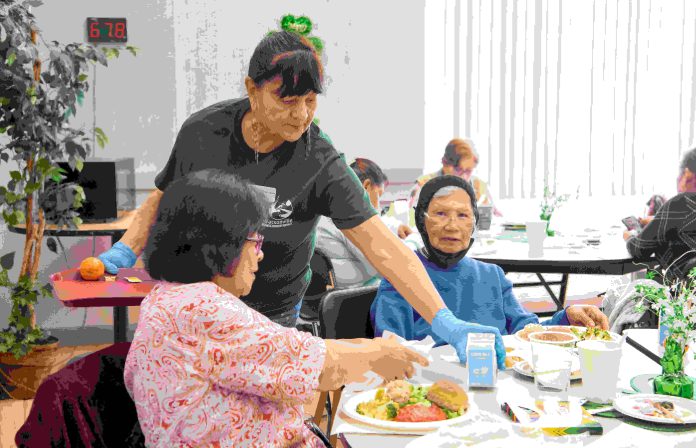
As the federal government shutdown enters its fourth week—and as money the Supplemental Nutrition Assistance Program (SNAP) is set to dry up Nov. 1 unless deadlocked lawmakers reach an agreement—nonprofits across the U.S. are bracing themselves to help millions of people who could lose their benefits.
“We’re in crisis response at the moment,” said Second Harvest Food Bank (SHFB) CEO Erica Padilla-Chavez.
Some 40,000 people in Santa Cruz County rely on SNAP benefits to augment their monthly grocery budget, Padilla-Chavez said. This includes 10,000 children.
In California, SNAP is known as CalFresh.
“What that means at the moment is that Second Harvest Food Bank will be serving as the first line of defense against hunger in November,” she said.
As a response, the food bank is tapping into its reserves, asking local jurisdictions for help and leaning harder than ever on its team of volunteers. Organizers are also hoping to see an uptick in donations, particularly as the holiday season approaches and the organization prepares to launch its annual Food and Fund Drive.
“We need a community approach right now to this situation,” Padilla-Chavez said. Our community members can help us greatly.”
On its website, the United States Department of Agriculture states that “the well has run dry” for SNAP benefits.
In response, more than half of U.S. states have filed a lawsuit against the USDA in an attempt to get the agency to free up $6 billion in emergency funds to keep the SNAP program going.
The Republican-led agency has refused, saying the money is needed for emergencies.
Santa Cruz County residents, meanwhile, are facing the loss of a substantial portion of their assistance, Community Bridges spokesman Tony Nuñez said.
“I think that there’s going to be a lot of folks who are looking for food assistance and we’re obviously concerned for everybody,” he said.
Nuñez added that that people can get assistance through SHFB, and can get hot meals at Community Bridges’ four different locations throughout the county.
And with the shutdown affecting programs such as Women, Infants, and Children (WIC), some 5,500 people in Santa Cruz, Santa Clara and San Benito counties could see that benefit dry up if it does not end.
But Nuñez stressed that the program is funded through the end of November, and participants can still access the benefits on their EBT cards.
That’s because the state of California has funded a portion of the money. In addition, some funding is coming from the federal government, and some from the California legislature, he said.
But it is not clear what will happen at the end of November, since another wave of funding from the state legislature is unlikely.
“We’re hoping that the government shutdown ends sometime in November, so we don’t have to sort of have that sort of conversation about what happens after,” Nuñez said. “We’ll see what happens in the next few weeks, in terms of the government shutdown.”
House Democrats on Oct. 14 introduced the WIC Benefits Protection Act, which would guarantee continued funding for WIC for the nearly 7 million women, infants, and children nationwide that rely on it, even through government shutdowns.
In the meantime, Nuñez says he expects an increase in the numbers of people who seek help from Community Bridges’ Meals on Wheels program.
But that program is suffering, too, particularly after the Santa Cruz County Board of Supervisors in the recent round of Collective of Results and Evidence-based (CORE) funding reduced Meals on Wheels’ allocation by $70,000.
The program currently has a waitlist of about two-dozen people, Nuñez said.
People who still need food assistance throughout the week can drop into any of four in-person congregate dining sites throughout the county.
In addition, the organization has launched an agreement with Grey Bears to expand that organization’s weekly grocery bag distribution.
Losing food benefits would not only affect the people who depend on the funds. It would also have a cascading effect on grocery stores and farmers, because the recipients would be unable to spend as much, Nuñez said.
And so, faced with multiple layers of financial uncertainty, nonprofits are looking to their donors for continued funding.
According to Nuñez, more than 31% of Community Bridges’ funds comes from donations.
“Without those donations, we would not be able to serve as many people as we do,” he said.
•••
INFOBOX
To apply for Meals on Wheels, visit bit.ly/47N5E1x.
To donate to Community Bridges, visit communitybridges.org/donateTo doinate to Second Harvest Food Bank, bit.ly/43GyOgg













Relax mi amigos
Just let Trump (aka the King) do his thing and usher the undocumentos out of town!
Magically the welfare rules will go way down and those of us remaining will have less need for government assistance
Ipso facto
Correction: rolls